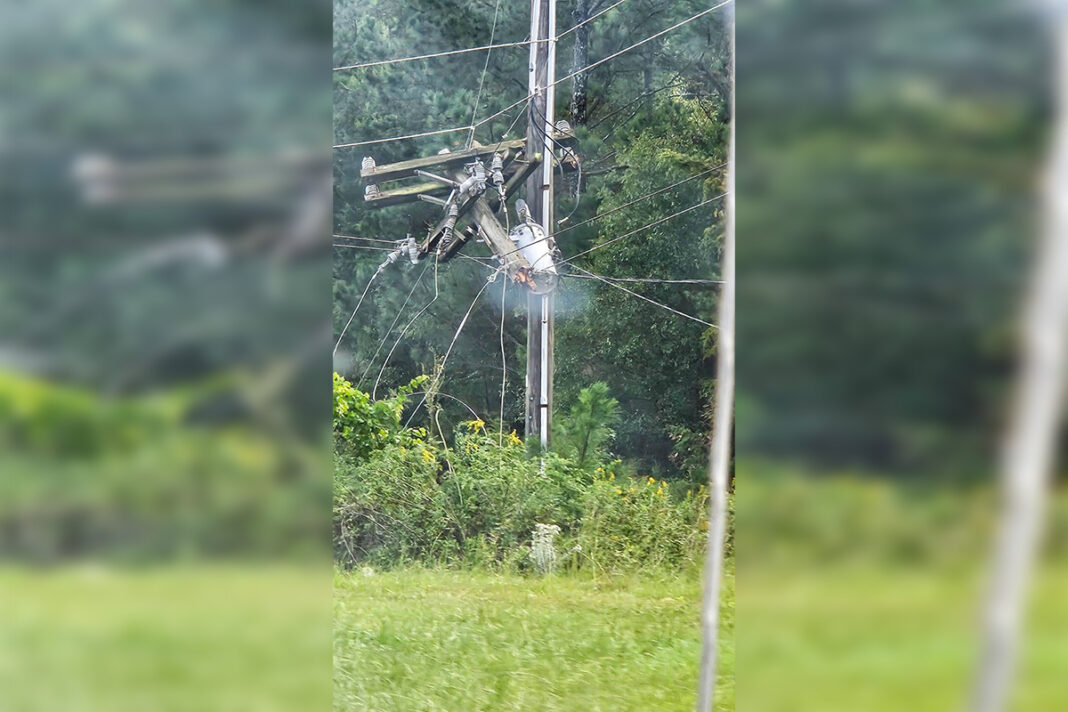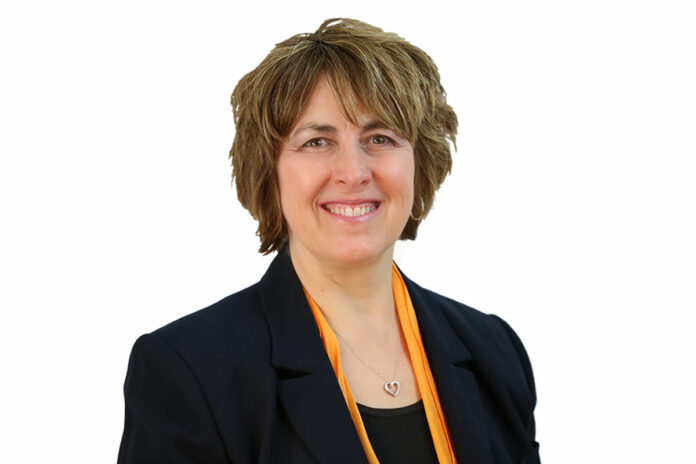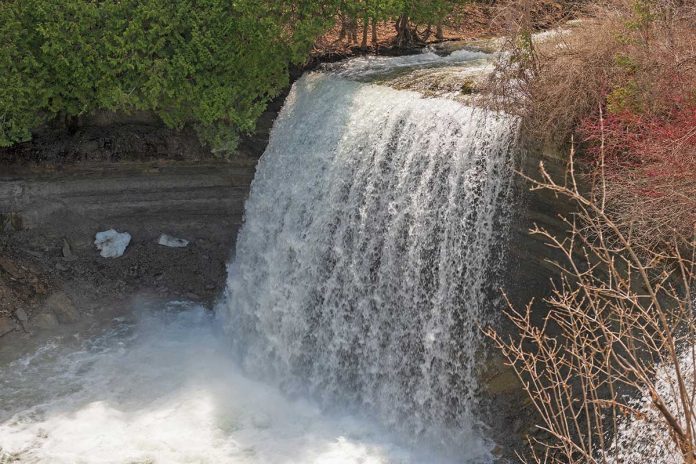Heather Newlands says this is a lesson she learned from Manitoulin
SOUTH CAROLINA—A Haweater, who is now living in South Carolina, and her family were one of the few lucky enough to escape the worst of the wrath that Hurricane Helene posed on residents in four US states recently.
“We have been through other storms and hurricanes in the past, but this one has been a lot worse,” Heather Newlands, who is originally from Kagawong, told The Expositor from the home she shares with spouse Francois Masbou and their children in South Carolina on Wednesday of last week. “We live close to Greenville in the western part of the state.”
“We now have our power (hydro) back on,” said Ms. Newlands. “You kind of forget how spoiled we are with hydro. But having grown up on Manitoulin where there are a lot of winter storms and the power goes out, I learned to be prepared for any type of storm and power going out and make sure there is a lot of water and food around.”
“The storm was very intense,” said Ms. Newlands. “This area was one of the areas that received a lot of high winds, and as I said, we have been without power since the start of the hurricane.”
However, “we were fortunate that nothing landed on our house,” stated Ms. Newlands. “We were good to go. We have a lot of very large trees around our house and these trees provided a buffer from the high winds and power lines hitting the house.”
“We have spent a lot of our time helping others who were not so lucky,” said Ms. Newlands. “I stopped taking pictures of the damage, because there is only so much you can look at of this type of thing.”
Ms. Newlands noted the day before she had bought a “whole lot of bottles of water and travelled to Fletcher, South Carolina, where we used to live. I went to our old neighbourhood to hand out the water and took food out of the freezer to cook and give to other people and to see where we could help. There was so much flooding, and I saw people whose furniture was out on the front lawn and they were scraping the mud off of it. It is so sad.”
“There was a lot of flooding in the mountains around Asheville (one of the areas hardest by flooding). It’s terrible to see,” said Ms. Newlands.
“I have been volunteering at a help centre in the community,” she said. “We are trying to help where we can.”
On Saturday morning, Ms. Newlands provided an update. “As of this morning, there are still tens of thousands in our area without power and it will be months of cleanup with downed trees. We have 12 large ones behind us, but they pose no threat. I have been hauling tree debris to the dump for others and taking up loads of water and canned goods around Asheville to neighbourhoods we know, where there was devastating damage.”
“Crews have been working hard to clear roads here still and we can hear the planes and helicopters taking supplies up to Asheville area,” said Ms. Newlands. ‘We are very mindful of how lucky we are compared to many with this monster storm.”
Hurricane Helene not only hit North and South Carolina but the storm swept through Florida travelling north and caused damage as far north as Tennessee and Virginia.
The hurricane had killed at over 200 as of press time, leaving hundreds missing, causing record flooding and storm surges and cutting power to millions of homes and businesses.
Helene arrived as an unusually large storm, according to the U.S. National Oceanic and Atmospheric Administration (NOAA) with violent winds extending up to 560 kilometres from its centre. It was also travelling twice as a fast as a typical Gulf of Mexico storm striking the coast.
The storm made landfall in Perry, Florida on Thursday night (September 26) as a category four hurricane with winds reaching 225 kilometres per hour, according to NOAA, which said it was one of the most powerful storms to hit the US. On the Florida coast, it caused storm surges of up to 4.6 metres.
NOAA meteorologists Ryan Maue and Ed Clark independently calculated that 153 trillion litres of water poured down on the southeastern US over four days. That’s enough to fill and overflow Lake Athabasca, Canada’s tenth largest lake, or cover the entire surfaces of both Nova Scotia and New Brunswick together more than a metre deep.
“Torrential rainfall from the remnants of Hurricane Helene capped off three days of extreme, unrelenting precipitation,” said the North Caroline State Climate Office. That meant stream flows were already at daily record highs and soils on local mountain slopes were already saturated by the time the remnants of Helene brought more heavy rain. As Helene passed through, it could have mopped up some of the evaporating water as additional energy.
“We’re having awesome weather today,” said Ms. Newlands. “And it is so much better to have power back on,” she said pointing out her children, a son and daughter, were both at Clemson University when the storm hit.
“People are picking up the pieces and getting on with their lives,” said Ms. Newlands. “We are helping where we can. Helping others is what I grew up knowing on Manitoulin.”





